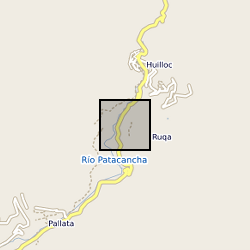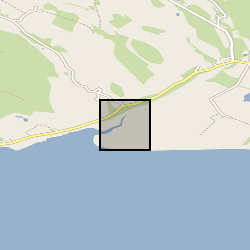Fungi
Type of resources
Topics
Keywords
Contact for the resource
Provided by
Years
Formats
Update frequencies
-

Concentration and accumulation palaeoenvironmental proxy data derived from a 6.3m sedimentary core drilled at Marcacocha, a present-day wetland (formerly a small lake) located at 3355m above sea-level in the Cordillera Oriental of the Peruvian Andes. Multi-proxy analysis of the sediments at decadal to sub-decadal temporal resolution has provided detailed datasets that include sedimentology, palynology, geochemistry, plant macrofossils, diatoms and oribatid mite remains (Chepstow-Lusty et al., 2003, 2007, 2009; Sterken et al., 2006). Select data are presented here relating to the uppermost 1.9m of the sequence (ca. the last 1200 years). The data relate specifically to: Chepstow-Lusty, A., Frogley, M.R., Baker, A.S. Comparison of Sporormiella dung fungal spores and oribatid mites as indicators of large herbivore presence: evidence from the Cuzco region of Peru. J. Arch. Sci. https://doi.org/10.1016/j.jas.2018.12.006 Chepstow-Lusty, A., Bennett, K., Fjeldså, J., Kendall, A., Galiano, W., Tupayachi Herrera, A., 1998. Tracing 4000 years of environmental history in the Cuzco area, Peru, from the pollen record. Mt. Res. Dev. 18, 159–172. Chepstow-Lusty, A., Frogley, M.R., Bauer, B.S., Bush, M.B., Tupayachi Herrera, A., 2003. A late Holocene record of arid events from the Cuzco region, Peru. J. Quat. Sci. 18, 491–502. Chepstow-Lusty, A., Frogley, M.R., Bauer, B.S., Leng, M., Cundy, A., Boessenkool, K.P., Gioda, A., 2007. Evaluating socio-economic change in the Andes using oribatid mite abundances as indicators of domestic animal densities. J. Arch. Sci. 34, 1178–1186. Chepstow-Lusty, A.J., Frogley, M.R., Bauer, B., Leng, M.J., Boessenkool, K.P., Carcaillet, C., Ali, A.A., Gioda, A., 2009. Putting the rise of the Inca empire within a climatic and land management context. Clim. Past 5, 1–14. Sterken, M., Sabbe, K., Chepstow-Lusty, A., Frogley, M., Vanhoutte, K., Verleyen, E., Cundy, A., Vyverman, W., 2006. Climate and land-use changes in the Cuzco region (Cordillera Oriental, South East Peru) during the last 1200 years: a diatom based reconstruction. Arch. Hydrobiol. 165, 289–312.
-

Data collected as part of the NERC funded Radioactivity and the Environment (RATE), Long-lived Radionuclides in the Surface Environment (Lo-RISE), research consortium.This data comes from the terrestrial workstream group based at the University of Manchester. The data consists of radionuclide measurements of environmental and biological samples including uranium (238), thorium (232) and radium (226), and soil subsurface and surface biota bioprospecting (plants and AM fungi). The data from this first dataset has been published in the following publication: Davies et al. (2018) Multiple environmental factors influence 238U, 232Th and 226Ra bioaccumulation in arbuscular mycorrhizal-associated plants. Science of the Total Environment 640-641:921-934.
-
Soil fungi communities from three Antarctic islands were characterised using DNA sequencing. Between October and November 2011, soil samples were collected from Bird Island, Signy Island and Leonie Island in the sub-Antarctic, low maritime and high maritime Antarctic respectively. Soil was collected under populations of Colobanthus quitensis (Kunth) Bartl. and Deschampsia antarctica Desv., the only two native vascular plant species that occur in Antarctica. Total DNA was extracted from the soils and fungal specific primers used to amplify the ribosomal ITS region for subsequent 454 pyrosequencing. Sequences are deposited in the NCBI Sequence Read Archive (study accession SRP068654). Funding was provided by the NERC grants NE/H014098/1, NE/H014772/1 and NE/H01408X/1.
-
The data compiles different aspects of plant biology (e.g., anatomy, physiology, fitness and gene-expression) reported in scientific articles that experimentally explored the role of plant microbial symbionts in plant tolerance to chilling (0-15 degrees Celsius) and freezing (<0 degrees Celsius) conditions. Each variable included in the dataset is composed of at least four values, representing the mean of the measured variable with or without a given microbial symbiont and under control or cold conditions in a factorial design. The data were generated for a meta-analysis, and so the level of replication and standard deviation or standard error, plus other relevant information such as plant and microbial species, and source, are also included. The search from which the articles were obtained used ISI-web of Science used ENDOPH* AND COLD and MYCORRHIZA* AND COLD in both title and keyword fields from 1975 to 2019. Funding was provided by Posdoctoral-FONDECYT 3180441, FONDECYT 11140607 and the NERC-CONICYT awards (NE/P003079/1 - PII20150126)
 NERC Data Catalogue Service
NERC Data Catalogue Service